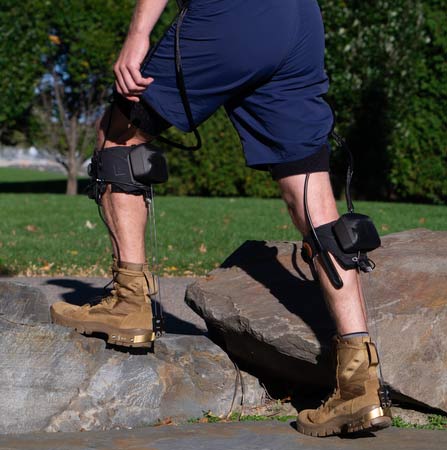
Researchers developed a new approach in which robotic exosuit assistance can be calibrated to an individual and adapt to a variety of real-world walking tasks. Image courtesy of Biodesign Lab, Harvard John A. Paulson School of Engineering and Applied Science at Harvard University
Researchers from Harvard University’s John A. Paulson School of Engineering and Applied Sciences (SEAS) and Harvard’s Wyss Institute for Biologically Inspired Engineering have developed a new approach in which robotic exosuit assistance can be calibrated to an individual and adapt to a variety of real-world walking tasks in a matter of seconds. The bioinspired system uses ultrasound measurements of muscle dynamics to develop a personalized and activity-specific assistance profile for users of the exosuit.
“We used ultrasound to look under the skin and directly measured what the user’s muscles were doing during several walking tasks,” said Richard Nuckols, PhD, a postdoctoral research associate at SEAS and the Wyss Institute. “Our muscles and tendons have compliance, which means there is not necessarily a direct mapping between the movement of the limbs and that of the underlying muscles driving their motion.”
The research team strapped a portable ultrasound system to the calves of participants and imaged their muscles as they performed a series of walking tasks. The new system only needs a few seconds of walking to capture the muscle’s profile. For each of the ultrasound-generated profiles, the researchers then measured how much metabolic energy the person used during walking with and without the exosuit. They found that the muscle-based assistance provided by the exosuit significantly reduced the metabolic energy of walking across a range of walking speeds and inclines. The exosuit also applied lower assistance force to achieve the same or improved metabolic energy benefit than previous published studies.
When tested in real-world situations, the exosuit was able to quickly adapt to changes in walking speed and incline. This approach may help support the adoption of wearable robotics in real-world, dynamic situations by enabling comfortable, tailored, and adaptive assistance.
Next, the research team aims to test the system making constant, real-time adjustments.







